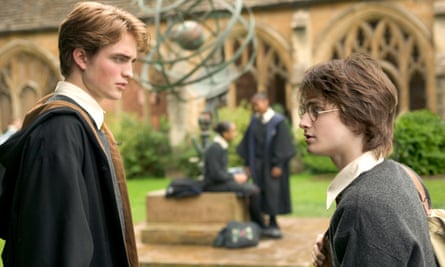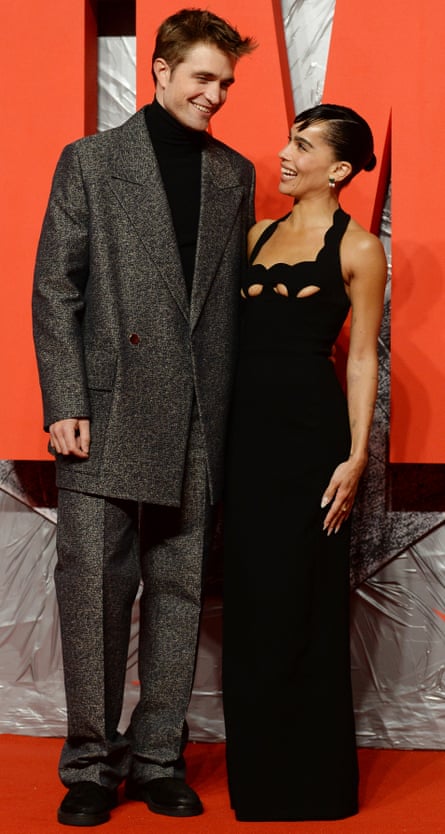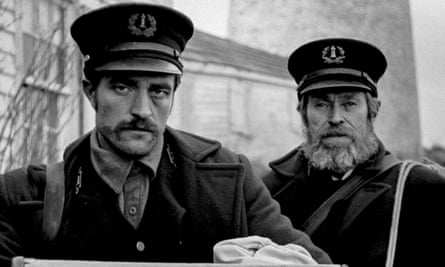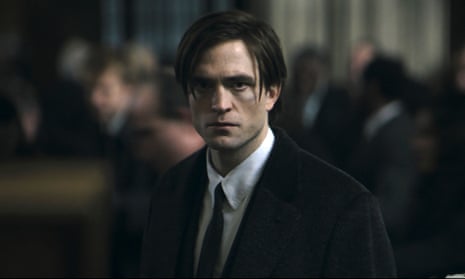At first glance, it looks like a neatly managed movie star career path: the graduation from teen-franchise heart-throb to a starring role in a superhero flick. But Robert Pattinson’s journey from Twilight – which made him, along with co-star and sometime girlfriend Kristen Stewart, one of the most famous people on the planet – to the latest incarnation of the nocturnal vigilante Bruce Wayne in The Batman, has been intriguingly circuitous.
He took a decade-long detour through arthouse and auteur cinema, through offbeat roles – the freaks and weirdos, the feckless and the fundamentally untrustworthy – before he finally circled back, via scene-stealing supporting performances in The King and Tenet, into the kind of lead role which cements an actor’s A-list status. It could be viewed as a risky strategy, but it is one that paid off handsomely. Pattinson, who is now 35, has honed his mercurial talent. He is not just a movie star, he’s a thrillingly unpredictable and daring character actor. And he has nurtured something that is in short supply in his generation of groomed and polished media-savvy contemporaries: a refreshing oddball eccentricity.

Pattinson found himself in a fortunate position of financial security post-Twilight – the widely held industry and audience assumption was that the safety net of Twilight earnings allowed him to pursue roles in the kind of films he watched by choice, working with the kind of directors that inspired him – such as David Cronenberg, Claire Denis, Robert Eggers and the Safdie brothers. However, in interviews which jangled with self doubt and an uncommon rawness, he sometimes claimed that the offers of big league roles just weren’t materialising and, having charted a course into arthouse waters, he had effectively removed himself from the A-list.
This latter option seems unlikely – you don’t just stop being one of the most bankable stars on the planet, however many bonkers black and white seagull-slaughtering indie roles you take on (The Lighthouse) or onscreen prostate examinations you submit to (Cosmopolis).
It’s worth mentioning at this point that the quirky and self-deprecating Pattinson is not the most reliable narrator of his own life. He went through a phase of spicing up interviews with fictional incidents: the story of witnessing an exploding clown car fatality during a traumatic childhood visit to the circus, for example. Or the time when he claimed that he spontaneously went for a meal with a stalker in Spain, and then scared her away by being such a miserable dinner companion. Pattinson’s fabrications are skewed towards the surreal and almost believable, self-contained short stories in miniature. It’s not for nothing that Eggers, who directed The Lighthouse, compares his oddball, deadpan sense of humour to that of the comedian Andy Kaufman.

If not at the top of the A-list, he was certainly A-list adjacent, otherwise he wouldn’t have been cast in The Batman. “It is undeniable that he is a force to be reckoned with,” says Cindy Tolan, one of the casting directors of The Batman. “Robert is an incredible actor possessing extraordinary talent. From his films, The Rover, Cosmopolis and then the Safdie brothers’ Good Time, he possesses a smouldering, quiet subtlety and incredible technique.”
But the actor we see in the bat-cowl has come a long way since he was everyone’s favourite undead dreamboat, with a pearlescent skin tone and, as Pattinson pointed out in an interview at the time, some major personal problems. “The more I read the script, the more I hated this guy, so that’s how I played him, as a manic-depressive who hates himself. Plus, he’s a 108-year-old virgin so he’s obviously got some issues there.”
And his Twilight character Edward Cullen was not Pattinson’s only target. His post-Twilight career choices could be viewed as a series of counterstrikes against his movie star status and, in the case of Cronenberg’s acidic Hollywood satire Maps To The Stars, perhaps even against the movie industry itself.

Other actors have had conflicted relationships with their own physical advantages – Brad Pitt, for example, prefers that the subject of his looks remains off limits in the dialogue of his films. But few have gone to war against their own beauty in the way that Pattinson did. His choices systematically dismantled his star appeal to reveal something rather more complex, intriguing and at times almost unsavoury.
Pattinson is not afraid of embracing the more repellent aspects of his characters, or even his own persona. This, after all, is an actor who started (false) rumours about his own shampoo-dodging and questionable personal hygiene. Even so, he managed to secure a lucrative deal as the face of the Dior Homme scent.
In Cosmopolis, the first of two collaborations with Cronenberg, his character, a billionaire asset manager, is vampiric in a way but far colder and crueller than Cullen ever was. In David Michôd’s post-apocalyptic thriller The Rover, playing a slow-witted outlaw, he’s concealed behind teeth that look as though they’ve been borrowed from a corpse, facial tics and a sluggish way of masticating his words like chewing tobacco. In Good Time, his crook on the run is slippery with panicked sweat and desperation. And in The Lighthouse, the entire gloriously deranged film looks as though it reeks of rotting herring, Pattinson’s character included.
But perhaps the most revealing of his post-Twilight ventures was Fear & Shame, a three-minute comedy short film which Pattinson wrote and starred in, showing the actor besieged by photographers (“a gauntlet of trolls!”) and rubbernecking pedestrians as he attempts to get across NYC to satisfy his craving for a hotdog. It’s quirky, self-mocking and very dry in its humour. It also captures the isolated, disengaged quality that makes him such a great fit for outsider roles – of which the latest is Batman.
Raised in Barnes in west London, allegedly expelled from one prep school for stealing and selling porn magazines to fellow students, and initially more interested in music as a career than in acting, Pattinson had already tasted a degree of attention following his performance as Cedric Diggory in Harry Potter and the Goblet of Fire. Lucy Bevan, the other casting director on The Batman, recalls: “I first met Rob when he was 17 and still at school. He was shy but had impeccable manners and was intriguing. I was working for the late great Mary Selway at the time, and we cast him in his first film.” She adds: “He still has impeccable manners.”
Even given the Potter connection, however, he was unprepared for the success of the Twilight films. The fame was of the variety that required escape strategies: Pattinson would switch cars and clothes to confuse the fans and the paparazzi. It was not something, he said at the time, to which he was particularly well suited. “I don’t think anyone can understand what’s happening. You wake up one day and you’re suddenly a star … really weird.

“It’s a little bit over the top. All my life, I’ve hated crowds. I was quite a paranoid person anyway, so it doesn’t really feed well when people are looking at you. I’m not really in the right job. I don’t like having my photo taken. I don’t like the attention.”
An actor who thrives on nervous energy, he harnessed that innate paranoia in films like Good Time and The Lighthouse. And it meant that he is well placed to tap into what he has described in interviews as a more socially maladroit “weirdo” quality in his version of Batman. “There’s a more nihilistic slant to it … it’s sort of implied that he’s had a bit of a breakdown,” he revealed to GQ.
So what’s next for Pattinson? A return to Gotham is certainly a possibility, with Warner Bros rumoured to be considering a trilogy. But productions of this size are huge and time-consuming. What might be good news for comic-book movie fans is less so for indie cinema if it takes one of its most consistently intriguing and adventurous character actors out of circulation for several more years.
